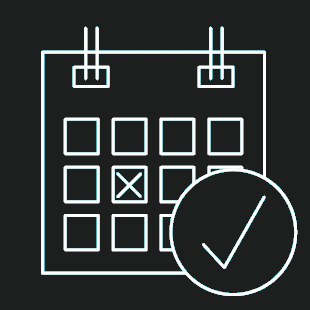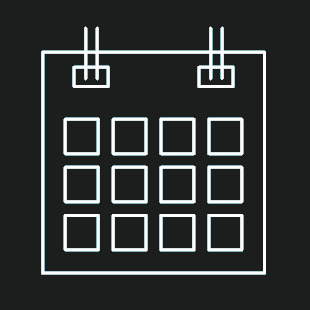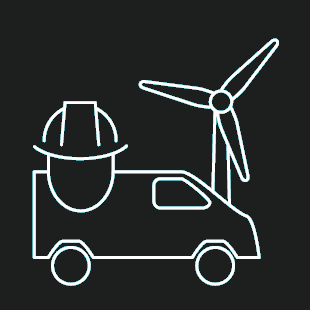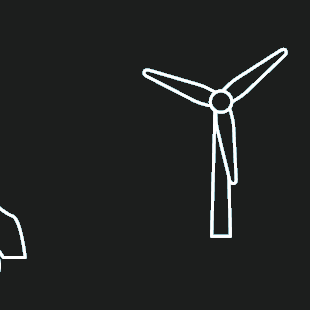Predicting damage to wind turbine rotor blades is notoriously difficult. We know that over the 20 to 30-year lifecycle of a wind farm, some damage will occur, but the when, where, how, or severity is anyone’s guess. And this is why regular inspection is so important. By using autonomous drones to carry out blade inspection, we are building up a treasure of data that can be used over and over again, to show us what is happening over time.

Historically, inspection reports were not prepared with statistical analysis in mind. The information gathered was for the purpose of recording damages, proving that an activity was done, or to provide a follow up on the asset. But when we talk about blade inspections today, we’re talking about an investment in high-quality, high-resolution images and metadata. Data which records the integrity of the entire blade, including the tiniest damages, and that locates, measures, and classifies them. This marks the start of a new era and as these data are collected on a going forward basis, they also enable quality control of damage repairs and ultimately form the basis for predictive maintenance.
The power of analytics
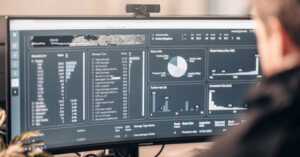
Our 3DX™ Blade Platform marks the start of a digital journey, providing an overview of the status of an entire wind farm fleet. Each successive inspection builds up the data treasure and the more inspections that are carried out using our automated drones, the more valuable the insights. The powerful software allows us to drill down and filter out any given aspect of the data enabling us to analyze specific areas of interest. For example, this could include analysis by damage category or severity class, by region, to identify and compare frequency by type of damages, or by specific wind turbine or blade type to get insights into their performance over time.
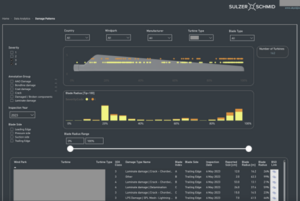 Different platform modules let you dive even deeper into the data treasure and let you monitor how damages evolve over time as well as analyze damage patterns in an intuitive way.
Different platform modules let you dive even deeper into the data treasure and let you monitor how damages evolve over time as well as analyze damage patterns in an intuitive way.
Put simply, the 3DX™ Blade Platform with its powerful data analytics module will allow you to turn dormant data into actionable insights.
Investing in data
When we talk about investment in data, we can see the benefits accumulate over the short, medium, and long term. In the short term, the inspection data allows our clients to know in detail the condition of their assets, which enables them to plan and optimize the coming repair campaigns and minimize turbine downtime. Artificial intelligence enables us to accelerate the analysis process.
In the medium term, by analyzing a larger sample of data, we lay the foundation for building a propagation model of blade damages. This enables our customers to better identify and define the most appropriate followup actions as well as prioritize damages requiring rapid attention.
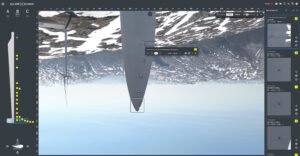 And the more data you have about your blade, the stronger the foundation for blade maintenance decisions. Already today we offer more than just visual blade inspections, such as thermal inspections of the Anti-Icing System and tower inspections. Having all inspection data available in our platform gives a more comprehensive view of your turbine’s condition. In the longer term, it may also be possible to take a deeper look at the blade and combine visual inspections with non-destructive techniques to detect damages inside the composite structures. Soon enough, the industry will be able to incorporate other types of data such as vibration data from the turbines or other sensors installed in the blades, to better monitor the performance of a wind turbine in its entirety.
And the more data you have about your blade, the stronger the foundation for blade maintenance decisions. Already today we offer more than just visual blade inspections, such as thermal inspections of the Anti-Icing System and tower inspections. Having all inspection data available in our platform gives a more comprehensive view of your turbine’s condition. In the longer term, it may also be possible to take a deeper look at the blade and combine visual inspections with non-destructive techniques to detect damages inside the composite structures. Soon enough, the industry will be able to incorporate other types of data such as vibration data from the turbines or other sensors installed in the blades, to better monitor the performance of a wind turbine in its entirety.
One thing for certain is that we will find interesting ways to make even better use of the treasure box of data. The wind turbine rotor blade forms part of an ecosystem which touches on operators, OEM’s, insurance companies, investors, asset managers and so forth. All these parties have some interest in the rotor blade conditions and maintenance aspects and cost implications. Providing tools and a platform which enable them to work better together and to create more transparency is a huge benefit on its own.
If you are interested in learning more about digital rotor blade inspections and our 3DX Blade Platform in particular, don’t hesitate to get in touch with us for an initial discussion and a demo.
